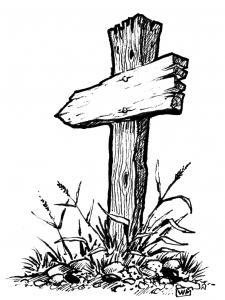
I’m starting a new series, “Off the Path”.
Off the Path takes an idea currently implemented in the Pathfinder Roleplaying Game and changes it — much like the old ‘KJD-ALT‘ posts I used to make to rec.games.frp.dnd.
Much of my design is influenced by my work on Echelon. I mostly talk about Echelon at my other site, but since this series is actually about Pathfinder I’m keeping it here.
Echelon Influence
The mechanics of Echelon are in flux, I’ve identified several ways they can be implemented. The only important bits about Echelon to remember in this series are:
- Many Games In One: D&D 3.x, and by extension the Pathfinder Roleplaying Game, has several modes of play hidden within it. At low levels it’s relatively gritty and realistic, in the middle levels the PCs are superhuman, and at the upper levels they are functionally superheroes and demigods (even if they don’t have divine traits — look at human mythology, and what the PCs can do).
- Power Curve Is In Spells: The true power curve in D&D 3.x is not at all based on fighters and the like, but on dedicated spell casters. The most powerful classes are cleric, druid, and wizard. Tiers in Echelon are mapped to iconic spell levels (the iconic spells are usually at levels 1, 3, 5, 7, and 9, and are gained at caster level 1, 5, 9, 13, and 17 respectively). I’ll be remapping back to D&D-esque levels (i.e. PCs start at first level, not ninth), but I’ll still keep “levels 1-4, 5-8, 9-12, 13-16, 17-20” in mind.
- Awesome Comes From Level, Not Class: Everybody should become increasingly more awesome as they reach higher levels. Spells are fantastic, but fantastic doesn’t need to mean spells. Even the non-casters should not be limited to strictly mundane, can-happen-in-reality options.
These will often have application in the Off the Path series.